Related Research Articles

Alfons Hug is a curator, critic and exhibition organizer.
Brígida Baltar was a Brazilian visual artist. Her work spanned across a wide range of mediums, including video, performance, installation, drawing, and sculpture. She was interested in capturing the ephemeral in her artwork.

Hélio Oiticica was a Brazilian visual artist, sculptor, painter, performance artist, and theorist, best known for his participation in the Neo-Concrete Movement, for his innovative use of color, and for what he later termed "environmental art", which included Parangolés and Penetrables, like the famous Tropicália. Oiticica was also a filmmaker and writer.
Roberto Cabot is a Brazilian visual artist.

Gretta Sarfaty, born Alegre Sarfaty, is also known as Gretta Grzywacz and Greta Sarfaty Marchant, also simply as Gretta. is a painter, photographer and multimedia artist who earned international acclaim in the 1970s, from her artistic works related to Body art and Feminism. Born in Greece, in 1947, she moved with her family to São Paulo in 1954, being naturalized as Brazilian.
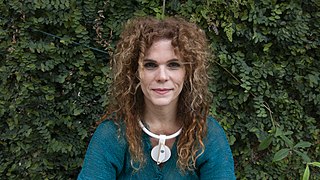
Laura Lima is a contemporary Brazilian artist who lives and works in Rio de Janeiro. Since the 1990s, Lima has discussed in her works the matter of alive beings, among other topics. Her works can be found in the collections of institutions such as Bonniers Konsthall, Stockholm, Sweden; Inhotim Institute, Brumadinho, Brazil; MAM - Museum of Modern Art, São Paulo, Brazil; Migros Museum für Gegenwartskunst, Zurich, Switzerland; Pinacoteca of the State of São Paulo, Brazil; Itaú Cultural, São Paulo, Brazil; Pampulha Museum of Art, Belo Horizonte, Brazil; National Museum of Fine Arts, Rio de Janeiro, Brazil; Hammer Museum, Los Angeles, USA; MASP - Museum of Art of São Paulo, Brazil, among others.
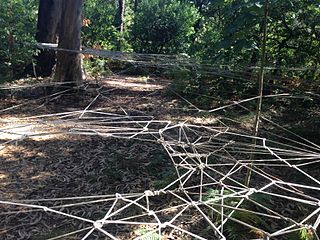
Fernanda Gomes is a Brazilian visual artist. She emerged as part of the generation of Rio de Janeiro-born artists that also include Beatriz Milhazes, Ernesto Neto and Adriana Varejão. With a career that began in the 1980s, her first solo exhibition took place in London in 1997.
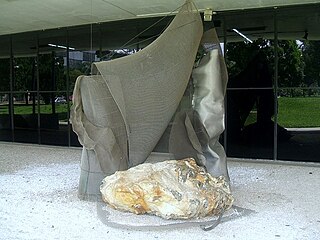
Iole Antunes de Freitas is a Brazilian sculptor, engraver, and installation artist who works in the field of contemporary art. Freitas began her career in the 1970s, participating in a group of artists in Milan, Italy linked to Body art. She used photography. In the 1980s, she returned to Brazil, but abandoned the human body as mediator of her work, adopting the "sculpture body". The artist uses materials such as wire, canvas, steel, copper, stone, and water to create her works.

Franz Josef Weissmann was a Brazilian sculptor born in Austria, emigrating to Brazil while he was eleven years old. Geometric shapes, like cubes and squares, are strongly featured in his works. He was one of the founders of the Neo-Concrete Movement.
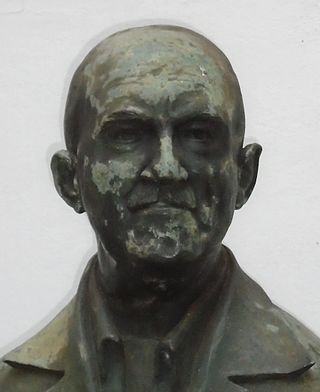
Alberto da Veiga Guignard also known as Alberto Guignard or Guignard was a Brazilian painter who became renowned for his depictions of the landscapes of Minas Gerais.
Maria Lynch is a Brazilian artist.
Gisele Camargo was born on July 11, 1970, in Rio de Janeiro, Brazil. She is a Brazilian painter and photographer who works in photography, video, and painting. She is best known for her pictorial meditations on urban and cinematic landscapes. She was formally trained at the Escola de Belas-Artes (EBA) of the Universidade Federal do Rio de Janeiro in the late 1990s. While in the institution, Camargo was part of a group of students who concentrated on issues of urban experience and visual culture in Rio de Janeiro. Camargo was different from the rest of her classmates, while they engaged mostly with multimedia language she remained a painter, with sporadic forays into photography and photocollage.
Dudi Maia Rosa is a Brazilian artist.

Rosângela Rennó Gomes is a Brazilian artist who lives and works in Rio de Janeiro. Her work consists of photographic images from public and private archives that question the nature of an image and its symbolic value. With the use of photographs, installations and objects, she appropriates and sheds new light on an anonymous body of photographs and negatives found mostly in flea markets, family albums, newspapers and archives. Rennó's interest in discarded images and habit of collecting were decisive in establishing her work strategies.
Judith Lauand was a Brazilian painter and printmaker. She is considered a pioneer of the Brazilian modernist movement that started in the 1950s, and was the only female member of the concrete art movement based in São Paulo, the Grupo Ruptura.
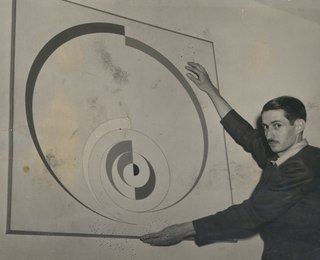
Ivan Ferreira Serpa was a Brazilian painter, draftsman, printmaker, designer, and educator active in the concrete art movement. Much of his work was in geometric abstractionism. He founded Grupo Frente, which included fellow artists Lygia Clark, Helio Oiticica, and Franz Weissmann, among others, and was known for mentoring many artists in Brazil.
Vera Chaves Barcellos is a Brazilian artist and educator. She was featured in the Radical Women show at the Brooklyn Museum in 2018.
Valeska Soares is a Brooklyn-based Brazilian-American sculptor and installation artist.

Wanda Pimentel was a Brazilian painter, based in Rio de Janeiro, Brazil. Her work is distinguished by "a precise, hard-edge quality encompassing geometric lines and smooth surfaces in pieces that often defy categorization as abstract or figurative. “My studio is in my bedroom,” Pimentel said in an interview. “Everything has to be very neat. .. I work alone. I think my issues are the issues of our time: the lack of perspective for people, their alienation. The saddest thing is for people to be dominated by things.”
Martha Araújo in Maceió, Brazil is a Brazilian sculpture and performance artist. She lives and works in Maceió the capital of Alagoas in Brazil. The style of her work was performance and sculpture art. She also explored her body with her performances. Her art emerged at the end of a military dictatorship that lasted from 1964 to 1985. She used their experiences during the dictatorship in her artwork to show how they felt trapped. Using textiles Araújo demonstrates the limit of the body through the play between repression and freedom. However, sculptures and performances were not her only interest she has also explored photography and video.
References
- 1 2 3 Gotti, Sofia (September 2015). "Teresinha Soares". Tate. Retrieved 24 April 2019.
- 1 2 3 4 5 6 7 8 9 10 11 12 13 Fajardo-Hill, Cecilia; Giunta, Andrea (2017). Radical Women: Latin American Art, 1960-1985. Prestel. pp. 49, 200–201, 231, 235, 350, 375. ISBN 978-3-7913-5680-8.
- 1 2 3 4 5 6 7 8 9 10 11 12 13 14 Gotti, Sofia (2015). "A Pantagruelian Pop: Teresinha Soares's 'Erotic Art of Contestation'". Tate. Retrieved 28 April 2019.
- 1 2 3 4 5 6 ""Quem tem medo de Teresinha Soares?" at MASP, São Paulo •". Mousse Magazine (in Italian). 22 July 2017. Retrieved 25 May 2019.